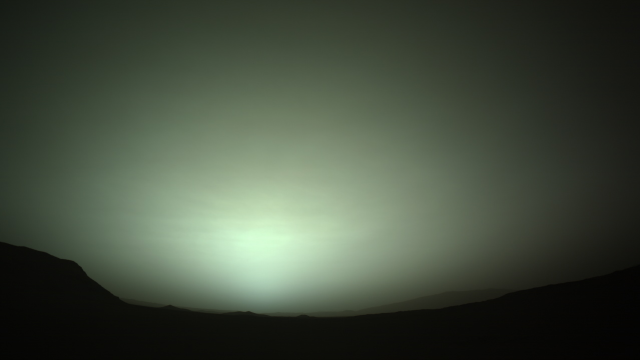The sky is a hazy shade of — er, summer — on Mars, as captured in a new image by NASA’s Perseverance rover.
Mars has four seasons, like Earth does, but they are a bit different from what we experience on our wet, life-filled planet. A Martian year is 687 Earth days, made up of 668 Mars sols, so its seasons last longer, too. They’re also more inconsistent than ours: In the Martian northern hemisphere, spring lasts 194 days, while autumn lasts only 142 days. Mars’ atmosphere is just 1% the density of Earth’s, and the entire planet is much colder and duster.
Around the Martian summer solstice (which will occur on July 12 this year), spacecraft orbiting Mars have historically observed a lot of cloud cover in its northern hemisphere. Now, the Perseverance rover is seeing evidence of those clouds from the ground, as evidenced in a recent photo captured by the rover’s Left Navigation Camera, or Navcam.
Ordinarily, the navigation camera does just that: It scopes out the Martian landscape so the rover doesn’t take any false steps (or treads) on the occasionally treacherous terrain. But it also looks up once in a while, to give NASA scientists and the viewing public something to study and appreciate.
In the recent photo — taken on January 29, or Sol 691 of the mission — a Martian sunrise looms from behind the diffuse cloud cover. The clouds are very thin because of how little water there is in the Martian atmosphere; according to a NASA release, if all the atmospheric water on Mars were on the planet’s surface, it would form a layer thinner than a strand of human hair.
The clouds are no threat to Perseverance — the main issue Martian landing craft face is Martian dust, which clings to their solar panels, preventing them from charging up — but they do make a nice case study for the rover’s instrumentation.
Perseverance’s main job isn’t cloudspotting. The rover landed on Mars on February 18, 2020, to better understand Mars’ geological history and seek out potential signs of ancient life. To that end, the rover is collecting rock samples from the planet which NASA intends to retrieve in an ambitious mission slated for the early 2030s. The rover finished its sample depot on Mars earlier this week.
Besides its suite of tools for studying the Martian ground, the rover does have some instruments for understanding the atmosphere. The Mars Environmental Dynamics Analyser monitors clouds and how they scatter and altogether block solar radiation arriving to the planet’s surface.
More: Perseverance Rover Images Reveal Ancient History of a Water-Soaked Martian Crater
